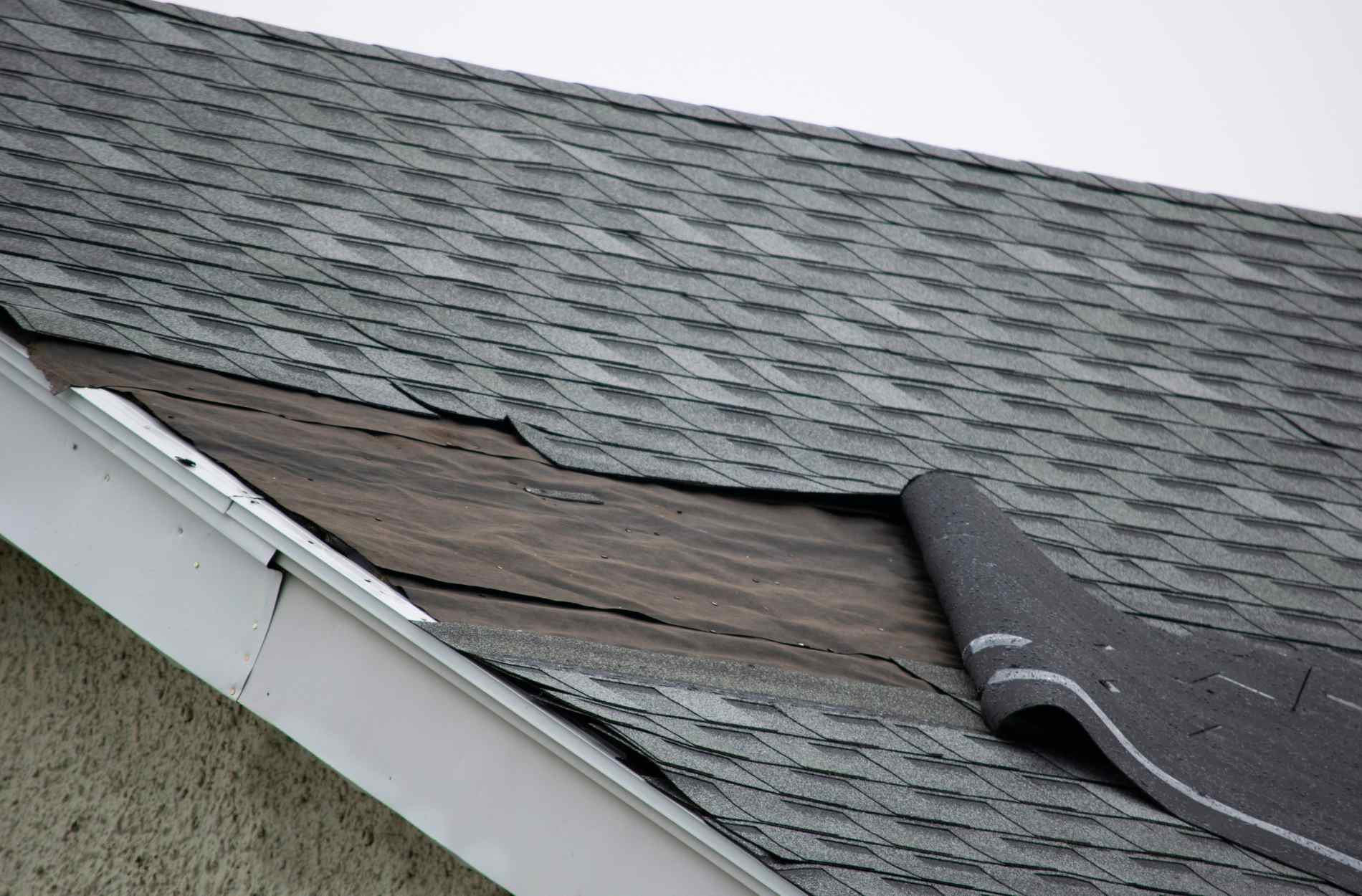After a night of heavy winds, things might look calm by morning, but that doesn’t mean your roof came through without a scratch. Even strong gusts that don’t take out trees or power lines can create problems overhead. For homeowners throughout Cuyahoga County, that means taking a few minutes to look up and check for early signs of trouble before they snowball into bigger repairs. Fall brings a mix of storms and shifting temperatures, so it’s a smart time to give your roof a once-over.
High wind can peel up shingles, shake flashing loose, clog your gutters, and even create leaks you won’t notice right away. Sometimes the damage is easy to spot. Other times, it’s hidden until water starts coming through. Knowing what to look for helps keep your roof going strong and gives you a chance to fix issues before the cold sets in. Here’s what to check after heavy winds move through your area.
Visible Damage
One of the first things to do after a windstorm is walk around your home and look for anything unusual on your roof. You don’t have to climb up there. Just grab a pair of binoculars or use your phone’s zoom to scan things from the ground. You’re looking for any type of change that wasn’t there before.
Here’s a quick checklist of what to spot:
– Missing or lifted shingles: These might look curled or completely gone, especially near roof edges.
– Debris on the roof: Branches, heavy leaves, or even trash can land up top and trap moisture or damage materials.
– Sagging spots: Any area that seems sloped, soft-looking, or uneven should be checked quickly.
– Discoloration: Black streaks or mismatched patches often mean something has shifted or lifted during the wind event.
If part of your roof looks like pieces shifted around or don’t match the rest, it’s a good idea to flag that and bring in someone qualified to check it out further. Don’t use drones or unstable ladders just to get a better look. It’s not worth the risk.
Gutters And Downspouts
Gutters aren’t always top of mind, but they take a beating during windstorms. Since they sit right at the edge of the roof, they’re the first to catch flying debris or slamming branches. Many roofing issues actually start when gutters get clogged or detached, allowing water to back up under the shingles. That’s why checking them is a small task that makes a big difference.
After heavy wind, take a look at:
– Blockages: Leaves, sticks, and roof grit often pile up at the corners and downspout openings.
– Bends or breaks: Wind pressure or falling limbs can twist sections out of shape or loosen fasteners. If parts of your gutter look like they’re sagging or don’t slope properly, they may need to be rehung.
– Separation: Look for gaps between the gutter and the edge of the roof. Even small ones can let water seep where it shouldn’t.
– Water stains: These show up underneath the gutters when water overflows frequently.
Most of this can be spotted by walking around the perimeter of your house and checking for signs of overflow or warping. Once fall leaves start dropping, it only adds to gutter strain, so catching problems early makes things easier later.
Flashing And Seals Matter More Than You Think
It’s easy to focus on shingles and gutters, but flashing and seals are where many leaks start. These parts might be small, but they carry a lot of responsibility. Flashing is the thin metal that wraps around things like chimneys, vents, and skylights. Seals are the weatherproof finishes around those same points. When high winds hit, these areas take a beating, especially if they weren’t firmly in place to begin with.
Wind can lift or bend the metal flashing, leaving small gaps that water can sneak through the next time it rains. Look around your roof fixtures to check if the flashing looks loose, crimped, or out of alignment. You might also notice it sticking up at odd angles. That’s usually a clue things aren’t as watertight as they should be.
Seals can wear out over time. Add strong wind on top of that, and it’s not rare for small cracks to start forming. These open the door to slow leaks that may not drip right away but gradually soak into wood, insulation, or drywall. That damage could show up weeks later, long after you’ve forgotten about the wind event that caused it.
If anything looks uneven or corroded, or you see flashing pulling away from the roof surface, it’s worth having someone take a closer look. Same goes for old sealant that looks cracked or dried out. These spots may seem minor, but they make a big difference in how well your roof stands up to future weather.
Interior Signs That Shouldn’t Be Ignored
Sometimes the real signs of trouble show up inside. Even if your roof looks okay from the outside, your attic and upper ceilings can tell a different story. After a windy night, take a few minutes to walk around your home and check for subtle hints that water might’ve made its way in.
Here’s what to keep an eye out for:
1. Water spots or stains on ceilings or along walls, especially near corners or fixtures.
2. Peeling paint or blistering drywall, which can mean there’s moisture trapped behind it.
3. Damp or musty smells rising from the attic or upstairs rooms.
4. Daylight sneaking through the roof boards in your attic, a sure sign gaps have formed.
5. Puddles or visible water in the attic, often near vent pipes or furnace flues.
If you notice any of these, even a faint stain, don’t overlook it. Wind-driven rain can sneak through tiny entry points and spread damage before you see the full effects. That’s where a quick interior check can save a lot of time, stress, and money down the road. One homeowner in Lake County noticed a ceiling stain that seemed harmless at first. A week later, after more rain, the leak had soaked through a support beam. That early sign would’ve been easy to handle if it was caught right away.
When To Call In A Roofing Repair Specialist
Some roof problems are easy to spot, but many aren’t. That’s the tricky thing about storm damage. You might think your home made it through untouched, while issues are quietly building overhead. That’s when bringing in a roofing repair specialist is worth every bit of effort.
Certain warning signs mean it’s probably time to stop guessing and pick up the phone:
– You see multiple shingles missing or curling up in different spots.
– There’s lifting or tearing around the flashing.
– Water is leaking into your attic or staining your ceilings.
– Your gutter system’s sagging or pulling away from the house.
– You noticed the sealing around roof vents or skylights has come loose.
Roofing repair specialists know exactly how high winds affect different types of roofs, especially in Northeast Ohio’s fall weather. They recognize where damage hides and how to fix it right the first time. Even if your roof looks mostly fine, a check from someone trained can find the tiny issues before they lead to larger headaches.
Don’t try to climb up there to confirm it on your own. That’s a shortcut that often leads to injury or more damage. Instead, stick to ground-level checks and let a professional handle anything up high.
Staying A Step Ahead of Seasonal Roof Trouble
Fall in Cuyahoga County means more wind, rain, and eventually snow. That’s why doing a full roof check after a storm isn’t just a once-a-year task. It’s a habit that can help catch weak spots before they cost you. Start with a clear look from the ground, scan for the signs listed above, and check your attic or upper floors for anything suspicious.
Whether it’s a few loose shingles, a bent gutter, or water creeping in through a seal, every problem has a window where it’s easier to manage. Once that window closes, repairs get a lot more complicated. You don’t have to know every technical detail to take action early, just keep track of anything unusual or out of place.
By staying alert after each storm and marking down what you see, you lay the foundation for better long-term care. A strong, problem-free roof makes a difference over time, keeping your home dry and protected as the weather keeps changing.
When storms leave your roof looking worse for wear, it’s time to call in a roofing repair specialist. Don’t let small issues turn into costly repairs. At Class 1 Pavers & Remodelers, we’re here to help keep your home protected. For expert advice and a quick, thorough inspection, reach out to our team today.



